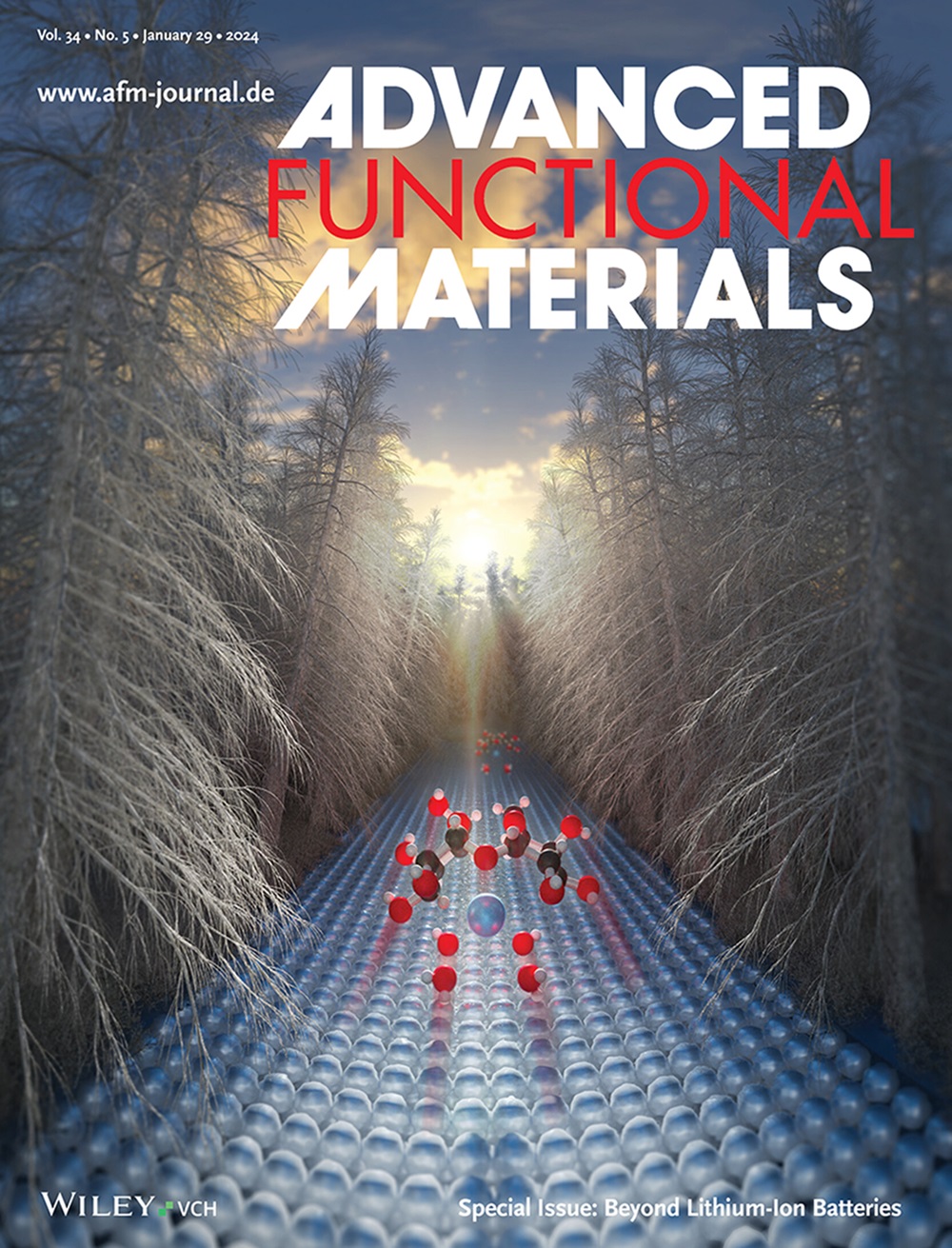用于增强盐度梯度电力转换的甲壳素剥离纳米工程
IF 18.5
1区 材料科学
Q1 CHEMISTRY, MULTIDISCIPLINARY
引用次数: 0
摘要
纳米剥离和溶解策略的快速发展已有效地将分层生物质材料分解成纳米片、纳米纤维,甚至原子级分子链,使其在渗透能量收集方面非常适用。然而,介于分子链和纳米纤维之间的亚纳米片,由于其制备方法要求苛刻,仍未得到研究。在此,我们开发了一种伪溶剂驱动的可编程离子插层-剥离策略,该策略可触发沿最低能量晶面(010)的剥离,模拟结果证实了这一点。这种方法可以控制从纳米纤维到亚纳米薄片和分子链的甲壳素集合体的剥离。具体来说,与纳米纤维相比,亚纳米薄片界面组装表现出更高的表面电荷密度和平面间距,从而使离子传输通量增加了 2.3 倍,同时保持了高性能的选择性离子行为,这一点已分别得到实验和分子尺度模拟的证实。这些改进在 50 倍盐度梯度下产生了卓越的离子传导性和功率转换性能(8.45 W m-2),超过了商业标准(5.0 W m-2)和其他全生物质膜系统(最大 2.87 W m-2)。这项工作为在亚纳米尺度上控制生物质剥离和提高渗透能量收集提供了深入见解。本文章由计算机程序翻译,如有差异,请以英文原文为准。

Chitin Exfoliation Nanoengineering for Enhanced Salinity Gradient Power Conversion
Rapid advancements in nano-exfoliation and dissolution strategies have effectively disassembled hierarchical biomass materials into nanosheets, nanofibers, and even atomic-scale molecular chains, making them highly applicable in osmotic energy harvesting. However, sub-nanosheets, situated between molecular chains and nanofibers, remain unexplored due to the demanding nature of their preparation methods. Herein, a pseudosolvent-driven programmable ion intercalation-exfoliation strategy is developed that triggers exfoliation along the lowest energy crystal plane (010), as simulations confirm. This method allows for the controlled exfoliation of chitin assemblies ranging from nanofibers to sub-nanometer sheets and molecular chains. Specifically, compared to nanofibrils, sub-nanometer sheet interfacial assembly exhibits higher surface charge density and interplanar spacing, leading to a 2.3-fold increase in ion transport flux while maintaining high-performance selective ion behavior, as confirmed by both experiments and molecular scale simulations, respectively. These enhancements result in superior ionic conductivity and power conversion performance (8.45 W m−2) under a 50-fold salinity gradient, surpassing commercial standards (5.0 W m−2) and other all-biomass membrane systems (Max. 2.87 W m−2). This work provides insights into the controlled exfoliation of biomass at the sub-nanometer scale and enhancing osmotic energy harvesting.
求助全文
通过发布文献求助,成功后即可免费获取论文全文。
去求助
来源期刊

Advanced Functional Materials
工程技术-材料科学:综合
CiteScore
29.50
自引率
4.20%
发文量
2086
审稿时长
2.1 months
期刊介绍:
Firmly established as a top-tier materials science journal, Advanced Functional Materials reports breakthrough research in all aspects of materials science, including nanotechnology, chemistry, physics, and biology every week.
Advanced Functional Materials is known for its rapid and fair peer review, quality content, and high impact, making it the first choice of the international materials science community.
 求助内容:
求助内容: 应助结果提醒方式:
应助结果提醒方式:


